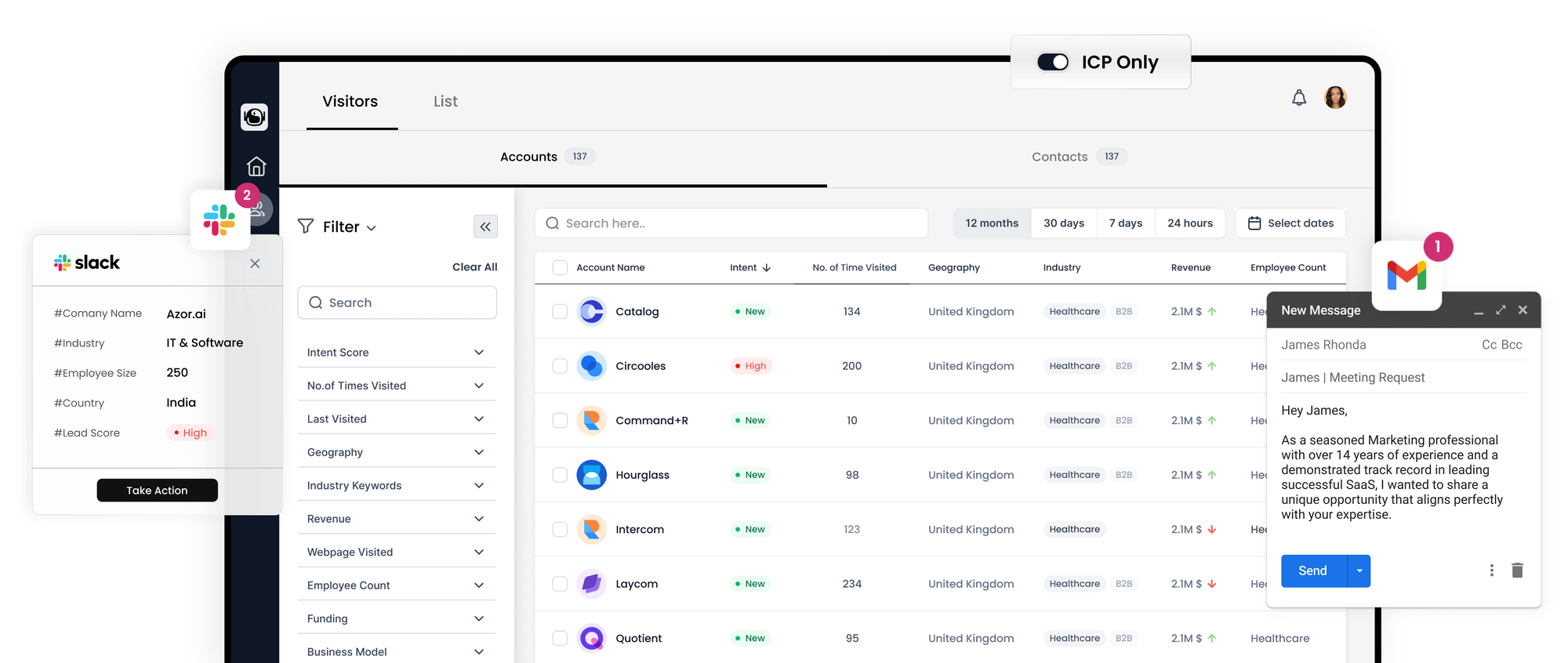Crafting an Effective Demand Generation Campaign for B2B Markets

For B2B marketing to be successful, you must have a profound grasp of your target audience's challenges and how your offerings can address them. In the competitive landscape of B2B, a well-executed demand generation campaign is crucial for standing out and connecting with potential clients.
If you're aiming to kick-start a demand generation campaign but aren't quite sure where to begin, this guide is for you. We'll clarify what demand generation entails, how it diverges from lead generation, and outline six key steps to captivate more customers through your marketing funnel with an effective demand generation strategy.

Demystifying Demand Generation
At its core, demand generation is a holistic marketing approach that marries product information with compelling narratives. It's about highlighting the issues that plague your audience and demonstrating how your products or services offer effective remedies.
The journey of demand generation unfolds through five pivotal phases:
1. Objective setting: Establishing quantifiable targets for lead sourcing.
2. Buyer persona creation: Profiling ideal customers for focused targeting.
3. Content crafting: Producing and tailoring content that resonates with each stage of the buyer's journey.
4. Strategic content dissemination: Choosing the most impactful channels for content distribution.
5. Performance measurement: Tracking the efficacy of the campaign and its impact on demand creation.
Organizations dedicated to demand generation often employ a mix of social media, content marketing, search engine optimization, paid advertising, and account-based marketing to amplify demand among their desired demographic.
Effective demand generation campaigns aim to seize your audience's attention with precision-tailored content, unveiled through optimally selected channels and moments. The endgame is to transform this heightened interest into actionable leads that can be cultivated and guided down the sales pipeline.
Differentiating Demand Generation from Lead Generation
Demand generation and lead generation are distinct, though they're frequently conflated. Lead generation targets an audience already in search of solutions, with the objective of gathering their information for ongoing engagement.
Conversely, demand generation is about reaching those who may not yet recognize that your product or service is the key to their unresolved challenges. It might be that they're not even cognizant of the problem to begin with. This dual challenge requires not only raising awareness of the issue but also positioning your brand as the premier solution, coaxing them to choose you amidst a sea of alternatives.
Demand generation weaves together product education with narrative finesse, engaging an audience by pinpointing their challenges and showcasing your company’s solutions.
Creating an Impactful Demand Generation Campaign in the B2B Arena
Launching a successful demand generation campaign in the B2B sector involves more than just understanding your product; it requires a deep dive into the needs and behaviors of your potential clients. This type of marketing goes beyond just capturing leads—it's about forging interest in your offerings among those who may not yet realize they could benefit from them.
Here's a comprehensive guide to help you kickstart a robust demand generation campaign:
1. Conduct Rigorous Research
To tailor a campaign that resonates, you need to thoroughly analyze your target audience:
**Craft Ideal Customer Profiles (ICPs):** Zoom in on businesses that embody your perfect customer based on criteria like industry, size, and needs.
**Develop Buyer Personas:** Sketch out detailed profiles representing the individuals you'll be engaging with at your ICPs, detailing their demographics, job roles, and preferences.
**Identify Pain Points:** Pinpoint the urgent needs and challenges your audience faces to position your offerings as the solutions.
**Adopt Customer-Centric Language:** Choose messaging that reflects your audience's voice and concerns.
**Decipher Customer Behaviors:** Understand the decision-making dynamics of your prospects, such as collective vs. individual decision-making and preferred channels for discovering new solutions.
**Scope Out Existing Solutions:** Gauge the competitive landscape to carve out a distinct niche for your brand.
This groundwork lays the foundation for presenting your offerings in a manner that aligns with customer expectations and demands.
2. Clearly Define Your Solution
Clarify how your product or service answers your audience's pressing issues. Rather than listing features, illustrate the tangible benefits your solutions bring to the table. Remember, your audience should be the protagonist of your narrative, with your solutions empowering them to overcome their challenges.
3. Finalize the Campaign Details
Hone the specifics of your campaign by deciding on:
**Preferred Channels:** Select platforms where your audience is already active, like social media or industry forums.
**Campaign Duration:** Set a clear timeline for your campaign to facilitate result tracking.
**Content Types:** Decide on the mix of content—be it blogs, videos, or podcasts—that will best engage your audience.
**Budgeting:** Allocate resources wisely to measure ROI post-campaign.
**Key Metrics:** Determine how you'll gauge success, such as through lead quality or engagement rates.
Incorporate these specifics into your marketing software for seamless campaign management.
4. Produce High-Quality Content
Craft content that educates and intrigues, subtly steering your audience towards seeing your brand as the go-to solution. Consider:
**Offering In-Depth Reports:** Leverage detailed, data-backed content to showcase your expertise and capture genuinely interested leads.
**Blogging and Guest Posts:** Establish authority and consistent engagement through blogging on your site and by contributing to reputable industry blogs.
**Embracing Social Media:** Use social platforms for direct engagement and to foster shareable content.
5. Monitor and Refine
As your campaign rolls out, keep a close eye on performance metrics. Utilize A/B testing to pinpoint what resonates with your audience and where refinements are needed. Employ tools like heat maps to understand user interactions and identify potential improvements.
6. Post-Campaign Analysis
At the campaign's conclusion, gather your team for a debrief. Assess what worked and what didn’t, taking note of strategies to retain or revamp for future initiatives. Reflect on these insights to continually enhance your demand generation efforts.
Leveraging Software for Campaign Management
The right software can significantly streamline your demand generation campaign, allowing you to handle complex tasks and large datasets with ease. By automating and organizing your efforts, you can focus on crafting messages that strike a chord with potential clients, ultimately guiding them through your sales funnel.
In essence, an effective demand generation campaign not only peaks interest in your solutions but also lays down the pathway for prospects to become valuable clients. It’s about striking the perfect chord of awareness and engagement, leading to a harmonious blend of brand authority and customer trust.
